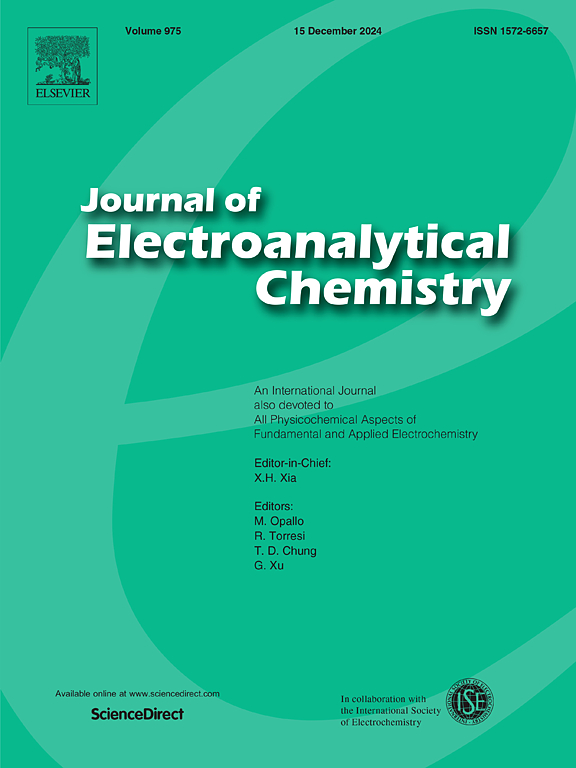Degradation mechanisms, long-term durability challenges, and mitigation methods for proton exchange membranes and membrane electrode assemblies with Pt/C electrocatalysts in low-temperature and high-temperature fuel cells: A comprehensive review
IF 4.1
3区 化学
Q1 CHEMISTRY, ANALYTICAL
引用次数: 0
Abstract
Complying with durability regulations is crucial for the successful commercialization of proton exchange membrane fuel cells (PEMFCs). This study evaluates the literature on complex and multi-faceted degradation processes, durability, lifetime concerns, recent advancements, and mitigation measures for proton exchange membranes (PEMs) and membrane electrode assemblies (MEAs). Extensive research has explored the degradation mechanisms of low-temperature perfluorinated ionomers, such as Nafion®, alongside non-fluorinated PEMs, including hydrocarbon-based polymers and organic–inorganic nanocomposites. Additionally, high-temperature PEMs based on phosphoric acid-doped polybenzimidazole (PA-PBI) have also been reported. In MEAs, the Pt/C electrocatalyst, catalyst layer (CL), and gas diffusion layer (GDL) play crucial roles, with degradation occurring through Pt nanoparticles dissolution, electrochemical Ostwald ripening, Pt particles growth/precipitation on the membrane, carbon support corrosion, mass transfer difficulties for ionomer redistribution and reduced porosity, and membrane deterioration. For long-term durability in fuel cell operation, various influential factors are investigated such as accelerated stress tests (ASTs) for open-circuit voltage, dynamic load, humidity cycling, high temperature, freeze–thaw effects, Pt degradation, GDL, startup-shutdown state, different fuels, along with measurements of membrane properties and cell performance. Accelerated stress test protocols for transportation accurately depict long-term failure modes, targeting specific degradation paths or combinations of mechanisms. Mitigation strategies for these issues are also suggested. In addition, this study aims to contribute to advancing durability enhancement and mitigation strategies through a comprehensive analysis of novel material systems optimized for the development of next-generation low-temperature and high-temperature PEMs.
质子交换膜和膜电极组件与 Pt/C 电催化剂在低温和高温燃料电池中的降解机制、长期耐久性挑战和缓解方法:全面综述
遵守耐用性法规对于质子交换膜燃料电池(PEMFC)的成功商业化至关重要。本研究评估了有关质子交换膜(PEM)和膜电极组件(MEA)复杂而多方面的降解过程、耐用性、寿命问题、最新进展和缓解措施的文献。大量研究探索了 Nafion® 等低温全氟离子膜与非氟 PEM(包括碳氢化合物基聚合物和有机-无机纳米复合材料)的降解机制。此外,基于磷酸掺杂的聚苯并咪唑(PA-PBI)的高温 PEM 也有报道。在 MEA 中,Pt/C 电催化剂、催化剂层 (CL) 和气体扩散层 (GDL) 起着至关重要的作用,降解发生在铂纳米颗粒溶解、电化学奥斯特瓦尔德熟化、铂颗粒在膜上生长/沉淀、碳支撑腐蚀、离子体再分布和孔隙率降低造成的传质困难以及膜劣化。对于燃料电池的长期耐用性,研究了各种影响因素,如开路电压、动态负载、湿度循环、高温、冻融效应、铂降解、GDL、启动-关闭状态、不同燃料的加速应力测试(AST),以及膜特性和电池性能的测量。针对特定降解路径或机制组合的运输加速应力测试协议可准确描述长期失效模式。此外,还针对这些问题提出了缓解策略。此外,本研究旨在通过全面分析为开发下一代低温和高温 PEM 而优化的新型材料系统,为推进耐久性增强和缓解策略做出贡献。
本文章由计算机程序翻译,如有差异,请以英文原文为准。
求助全文
约1分钟内获得全文
求助全文
来源期刊
CiteScore
7.80
自引率
6.70%
发文量
912
审稿时长
2.4 months
期刊介绍:
The Journal of Electroanalytical Chemistry is the foremost international journal devoted to the interdisciplinary subject of electrochemistry in all its aspects, theoretical as well as applied.
Electrochemistry is a wide ranging area that is in a state of continuous evolution. Rather than compiling a long list of topics covered by the Journal, the editors would like to draw particular attention to the key issues of novelty, topicality and quality. Papers should present new and interesting electrochemical science in a way that is accessible to the reader. The presentation and discussion should be at a level that is consistent with the international status of the Journal. Reports describing the application of well-established techniques to problems that are essentially technical will not be accepted. Similarly, papers that report observations but fail to provide adequate interpretation will be rejected by the Editors. Papers dealing with technical electrochemistry should be submitted to other specialist journals unless the authors can show that their work provides substantially new insights into electrochemical processes.

 求助内容:
求助内容: 应助结果提醒方式:
应助结果提醒方式:


